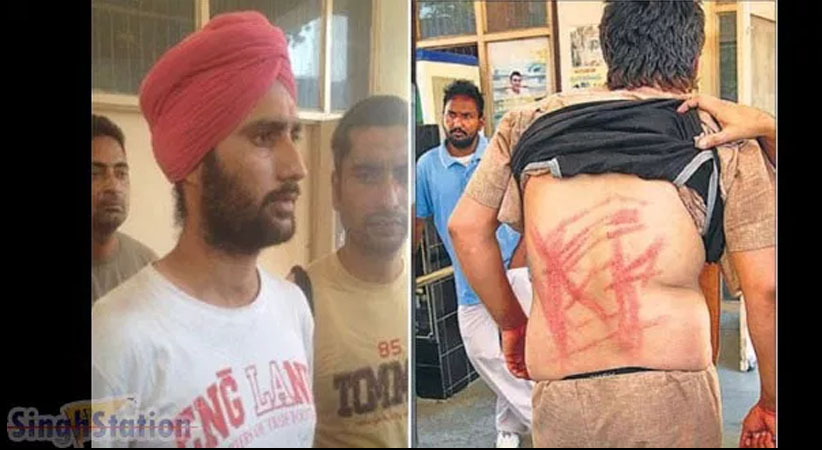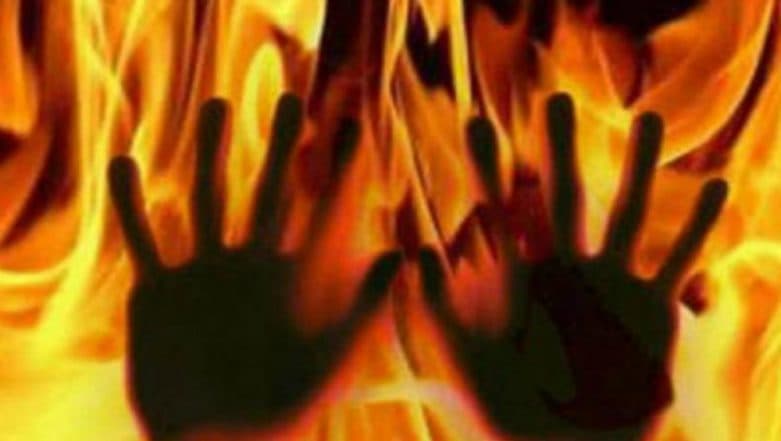NEWS & MEDIA
NEWS & MEDIA
India | 2016-09-09Death of a Cow, Birth of a Movement
The Gandhian non-cooperation movement of Gujarat’s Dalits and their move to join forces with Muslims have rattled the right wing, whose cow-protection vigilantism now threatens to blow up in its face
Dalits are not breaking any law, leaving the State government flummoxed by the protest. The government wants Dalits to go back to work, but the latter firmly refuse to oblige. This is the Dalit moment — a quiet, no-fuss coming of age. The tenacity and resilience of this non-cooperation movement, carried out by a people who barely manage to eke out a living, has caught the mighty Gujarat government by surprise.

Asked why the protesters chose non-cooperation, one of them, Ram Jatav, says, “We are too weak to do anything else. When we do their dirty work, they call us dirty and beat us. Well, let them get dirty, not us. Please tell me what has changed for us in all these years? But we will be the last generation to do this work.” Jatav has no land, no savings. The tiny, wiry man is however steely in his resolve. He was among the hundreds of Dalits who had embarked on a 10-day ‘Dalit pride march’ from Ahmedabad to Una on August 4. Dulari, one of the designated cooks during the march, had laughed as he pointed to the sea of people around us and said, “You say you are a journalist. All your [TV] channels cannot see this?” The lack of coverage of the protest march was striking, to say the least.
The country’s Dalit community had been restive following the suicide of Dalit scholar Rohith Vemula, who was reportedly hounded by two Cabinet ministers at the behest of the ruling BJP-affiliated student body Akhil Bharatiya Vidyarthi Parishad (ABVP). This was followed by former human resources development minister Smriti Irani wagging her finger at Dalit leader and four-time Uttar Pradesh chief minister Mayawati in the Rajya Sabha.

Then came the merciless flogging, which had been filmed by the attackers — the vigilante self-proclaimed gau rakshaks, or cow protectors. Adding insult to injury, the gut-wrenching opera of violence was circulated among the public. This proved to be a tipping point. The ripples even cost Gujarat chief minister Anandiben Patel her chair.
The eddies are travelling to Punjab, the state with the largest Dalit population, in the closely contested elections due early next year. Punjab CM Parkash Singh Badal was forced to cut short his electioneering exertions at a Dalit outreach programme of the Shiromani Akali Dal (SAD) after two women in the audience challenged his claims over schemes for the marginalised community. The septuagenarian beat a hasty retreat. This set off alarm bells for the ruling SAD-BJP alliance. The same day, in Gujarat, Dalits were thrashed for not clearing cow carcasses.
Despite the violence and economic pressures, the protesters remain undeterred. They have nothing beyond a notional sort of leadership, provided by Jignesh Mevani, the 35-year-old former journalist, lawyer and former Aam Aadmi party (AAP) spokesperson in Gujarat. Mevani, in fact, quit AAP in order to keep the Dalits’ fight “untainted by political affiliations”. This had been preceded by allegations from the BJP that he was a political mukhota (mask). The BJP, anxious to keep the movement from spreading outside Gujarat, has accused the Opposition of funding the protests.
Gujarat Dalits are wary of all politicians. Even Mayawati was given a cold reception. She was taken aback and later commented that she had last seen this cold Dalit determination in the early stages of Kanshiram’s (her mentor) Bahujan Samaj movement. Dalits no longer have patience for the political posturings of leaders coming in their midst, dining with them in the glare of TV cameras, and leaving them to do the dishes. A UP Dalit leader told me wryly, “Woh hamrey sath bhojan karte, aur vote ka bhog khatey hain” (They have a symbolic meal with us and then feast off our votes).
There are two primary reasons for this Dalit churn. One is the “controlled polarisation” of Hindu-Muslim votes, as a senior BJP leader had put it to me, in the run-up to three critical elections: Punjab, Uttar Pradesh and Gujarat. This polarisation strategy follows from the “Muzaffarnagar model”. The horrific 2013 riots in the UP town were followed by the BJP’s sweeping victory in the Lok Sabha polls, snagging a record 72 of the 80 seats in UP. Party president Amit Shah had given tickets to an eclectic band of sadhvis and swamis, including Niranjan Jyothi of the “Ramzade and haramzade” infamy.
Two years later, when Dadri resident Mohammad Akhlaq was lynched by a mob on suspicion of eating beef, Union minister for culture and tourism Mahesh Sharma nonchalantly described the killing as “an accident”. In Udhampur (Jammu and Kashmir), a trucker died and his colleague was injured after petrol bombs were hurled at them over rumours of cow deaths. These targeted killings — the victims mainly Muslims — by gau rakshaks seemed of a piece and were expected to reap a bumper electoral harvest, reminiscent of the BJP’s Ram Mandir movement. The lawless campaigns of the cattle vigilantes, largely comprising cadres of Vishwa Hindu Parishad and Bajrang Dal, continued with untrammelled freedom until they came up short with their attacks on Dalits.
What has completely unnerved the Hindu nationalist Rashtriya Swayamsevak Sangh (RSS) is the spectre of Dalit-Muslim unity and a potential fissure in the Hindu fold. The varna values cherished by the RSS are increasingly in the line of target of modern Dalits.

The coming together of Dalits and Muslims marks a new departure for both groups. This unity is arguably precipitated by the similarities in the socio-economic marginalisation faced by both communities in Gujarat. Muslims have found themselves ghettoised and on the margins for decades as communal fires raged in unending cycles. The Gujarat Dalit had till date not joined any protests. “The RSS and BJP took Dalits for granted in Gujarat. They were perceived as placid, unable to mount a challenge and happy to be co-opted into the Hindutava project with any crumbs that were thrown their way,” says a political analyst and veteran Dalit watcher from Lucknow University.
When they became the target of gau rakshaks, Dalits in Gujarat suddenly realised that they shared their plight with the Muslims, a large number of whom are Dalit converts, such as the weavers (julahas). The huge losses in the leather industry, traditionally manned by Dalits and Muslims, is another telling testimony of their shared pain. The protesting 30 Dalit organisations reached out to the large weavers’ network and attempted to forge an alliance. Mevani was one of the prime movers. It is still a loose alliance, at best, as the Muslims currently don’t have any leaders to give the alliance a more organised form.
Meanwhile, the germ of this alliance has intrigued Mayawati enough to make it a talking point in her UP poll campaign; additionally, the BSP has given a record number of tickets to Muslims.
Narendra Modi’s reluctant attack on the gau rakshaks reflected the growing unease in the BJP. The Prime Minister had insisted that the so-called gau rakshaks could attack him but not the Dalits. This is a strange statement to make for an elected executive with enormous powers at his command. Modi did not say a word about the attacks on Muslims, not even offering them this token palliative. The mother ship RSS, too, has issued a gag order to the hotheads of the larger parivar in view of electoral exigencies.

The emergence of Dalit-Muslim unity is a terrifying prospect for the RSS. Senior BJP leader and former RSS pracharak P Murlidhar Rao warned the Dalit communities that the “unity between the two is not sustainable and it has been historically proven that whenever these two communities get together, Dalits get wiped out”. He went on to cite the example of Pakistan. “Look at Pakistan. Where are the Dalits there? Dalits are part of Indian ethnicity. Dalits are part of India since the beginning,” he said at a function organised by Bharat Niti, a policy advocacy platform of the BJP and RSS on Dalit entrepreneurship.
The RSS’s unease has been growing from the time of Vemula’s suicide. His poignant suicide note, which declared that “my birth was my tragic accident’’, and the huge resonance it found, even leading to his family embracing Buddhism, had sent shockwaves across the RSS. When defence minister (MoS) VK Singh compared two dead Dalit children to dogs, the discomfort was greatly evident among the senior BJP leaders in UP.
They were as disturbed by Irani’s act of wagging her finger at Mayawati and, in true soap opera fashion, offering to cut off her head even as she misled Parliament on the facts of Vemula’s suicide. This, in fact, put paid to Irani’s dream of being the BJP’s UP CM face. It was also one of the reasons for her ouster from the HRD ministry.
As the genie of “controlled polarisation” comes uncorked from the bottle, those responsible for it don’t quite know how to control it any more. The former BJP minister-turned-trenchant Modi critic Arun Shourie made a prescient and candid observation on the Dalit protest movement and the government’s handling of it. “One of the instruments is headline management. So something bad happens in Kashmir; something bad happens in Gujarat such as the Dalits doing this protest, withdrawing cooperation; what does the government do? You plant another story or stories. Everybody runs these because you have a tutored media. Next morning you are not concerned about Kashmir or Gujarat, you are congratulating yourself on your success in diverting the media’s attention. It compounds the problem. It means that you will not pay attention to the fire that you have set. You don’t think there is a disaster there, you are busy celebrating a success. Your obsession is the media, not the situation.”
The RSS finds itself in a cleft — it cannot countenance any divisions in the Hindu Samaj, and yet it cannot be seen to compromise on the issue of cow protection. Ram Madhav, BJP general secretary, insisted that condemning all gau rakshaks alike was a move loaded with negativity. “Gau rakshaks is not a pejorative term. Even the PM only mentioned the fake ones trying to use the term for criminal activity,” he said. And this, precisely, is the problem.
The gau rakshaks continue attacking Dalits and Muslims even after Modi’s comments. It’s an uncontrolled polarisation that flies in the face of the stated wishes of the strong leader.
Swati Chaturvedi is a senior journalist and author.
The Hindu - Business Line
Link to Source: http://www.thehindubusinessline.com/blink/cover/the-death-of-a-cow-the-birth-of-a-movement/article9086013.ece





